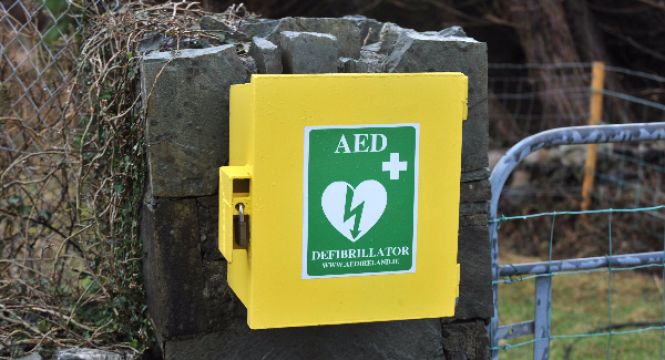Only a fifth of those involved in sports clubs are confident using defibrillators, a study has found.
Lack of knowledge on how to use an Automated External Defibrillator (AED), fear of using the machine incorrectly, unnecessarily shocking the patient, poor understanding of what it does, and concerns around legal liability are the primary reasons they are not used more in sudden cardiac arrests situations.
Sudden cardiac arrest (SCA) is a condition in which the heart suddenly and unexpectedly stops beating, and usually causes death if not treated within minutes. In Ireland, SCA causes up to 5,000 deaths each year with 70 per cent occurring outside a hospital setting.
The study, Assessment of Layperson Knowledge of AED use in Sports Clubs, is the latest edition of the Irish Medical Journal which found that only 20.4 per cent reported they were confident using such a device prior to teaching, while 77.5 per cent of participants said they would definitely be willing to use it after teaching.
The findings highlight that further teaching initiatives should include a broader range of sports clubs and should be made accessible to lay people in the community, while referees and players should be targeted as important subgroups to receive training. A module could also be considered for second-level students, it stated.
Education campaign
The setting up of nationwide AED registries would also be beneficial for structuring and arranging the provision of an appropriate educational campaign like this.
A number of selected sports clubs were visited to take part in the study. Participants were aged over 16 and were questioned about their current awareness and attitudes towards defibrillators and their willingness to use the device. Each participant then attended a two-hour small-group teaching session where they were educated on the role and use of the device, with the opportunity to practice in a controlled environment.
In total, 142 people took part in the study. Males accounted for 67.6 per cent of participants, with a broad range in ages. Their roles within their sports club varied, including coaches, players, parents, supporters and committee members.
Of those who took part, up to 8.5 per cent reported experience of working in a healthcare capacity, 14.1 per cent had received some form of prior teaching in relation to the device, and 16.9 per cent said they knew of somebody who had required use of an AED.
Regarding access to their club’s defibrillator, 88.7 per cent were aware their club owned an AED, 62 per cent knew the exact location, and 20.4 per cent reported having the means to access/open the device. Up to 75.4 per cent identified cardiac arrest as the most appropriate situation for the defibrillator use.
AED use
Participants were also presented with a diagram of the chest and asked to select the two areas for pad placement. Before the teaching session, 10.6 per cent were able to correctly identify the appropriate positions for pad placement, compared with 93 per cent after teaching.
All participants stated that they felt more people in the club should be educated on the purpose and function of the club defibrillator.
The study co-authors at Cork University Hospital highlighted: “The key finding of this study relates to the willingness to use an AED. In order to improve the national out-of-hospital cardiac arrest survival rate of 6.4 per cent, we need laypersons to be willing to attempt to use (such a device) to save the life of an individual who suffers a sudden cardiac arrest.
“In Ireland, defibrillators have become increasingly available in public places and there has also been considerable investment in developing the National Ambulance Service (NAS) to allow an appropriate emergency response, which continues right through to advanced in-hospital care.”
The authors added: “However, these important measures are less effective unless they are incorporated into a structured chain of response where laypersons have adequate knowledge to use the AED effectively while awaiting medical support.
“If an educational course of this nature is implemented effectively on a broader scale through a strategic campaign then it is hoped that this will translate to the prevention of death in tragic circumstances, and long-term improvement in the out-of-hospital cardiac arrest survival rate”.







